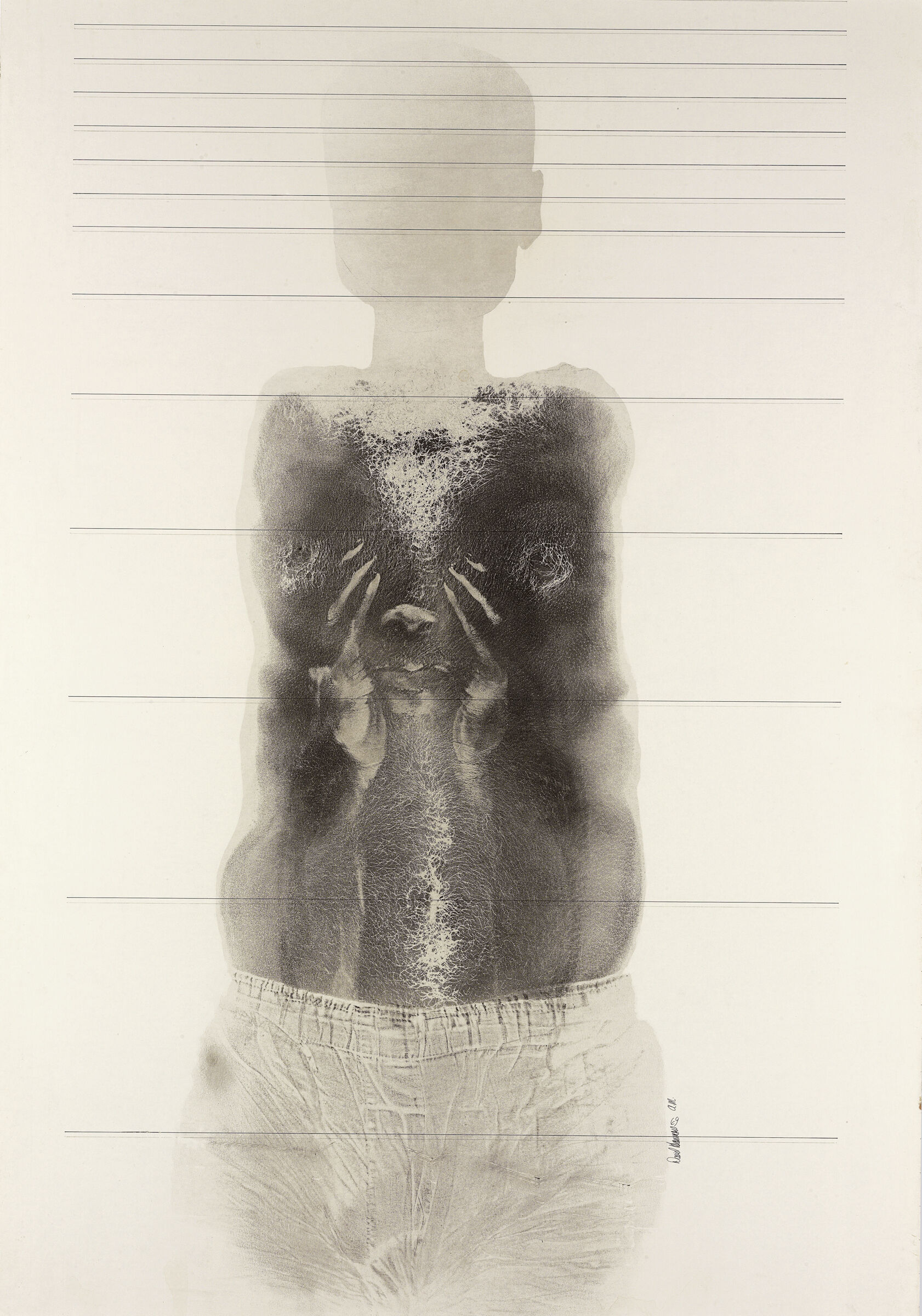What It Becomes | Art & Artists
Aug 24, 2024–Jan 12, 2025
What It Becomes | Art & Artists
David Hammons
4
To make his body prints, David Hammons coated himself in oil and pressed his body to the paper, effectively turning himself into a mark-making instrument. The process appealed to Hammons for its “element of surprise.” For him, something occurred in the moment his body met the page, which would only be revealed when he lifted himself up and dusted the impression with powdered pigment or charcoal. “I had no idea originally that all those wrinkles and all those folds would actually turn out like that,” he explained. “I just couldn't believe it. I still can't believe what I see sometimes.” As Hammons points out, body printing can capture intricate detail; but what in theory should be the most direct translation of the human form—not dissimilar from a fingerprint—becomes a tool for abstraction and distortion in the artist’s hands, as demonstrated in this surreal, layered self-portrait.

